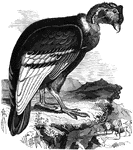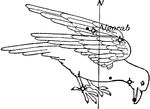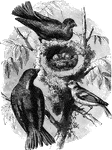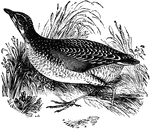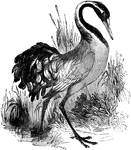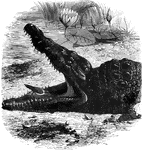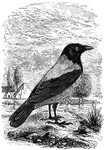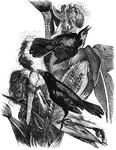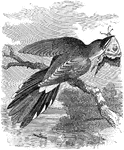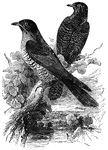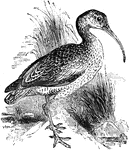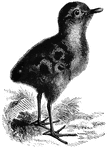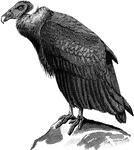
Condor
"On the Sarcorhamphus gryphus the Condor, the head and neck are bare, with dull red skin, wrinkled in…
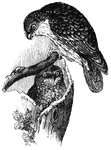
Athene conneviens
Athene conneviens, which derive their name from the Greek goddess of wisdom, supposedly for their meditative…
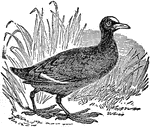
Coot
Coots , are medium-sized water birds which are members of the rail family Rallidae. They constitute…
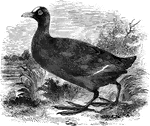
Common European coot
Averaging about sixteen inches in length, the common coot of Europe is found throughout Europe and Asia.

Cormorant
The Cormorant "P. carbo, but has a tuft of long narrow recurved plumes on each side f the crown in the…
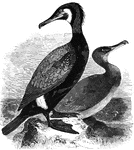
Black cormorant
The black cormorant averages about three feet in length, and is found in Greenland, as well as a long…
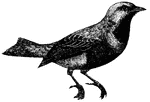
Cotinga
The Cotinga is remarkable during the pairing season, for its brilliant and variegated plumage,(Figuier,…

Cow-blackbird
A migratory bird, the cow-blackbird is notable among birds, for it does not build a nest.
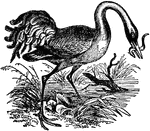
Crane
Cranes are large, long-legged and long-necked birds of the order Gruiformes, and family Gruidae. Unlike…
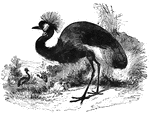
Balearic Crane
The balearic crane (also known as the crowned crane) stands about four feet high, and is easily domesticable.

Common European crane
The common crane of Europe is mostly of a blueish-ash color, feeding on worms, insects, reptiles, mollusca,…
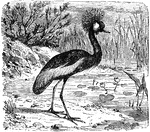
Crested Crane
"The Crested Crane has the top of its head adorned with a tuft of feathers, which it has the power of…
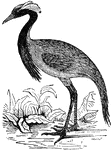
Demoiselle Crane
"It is gifted with great powers of mimicry. Its movements have an air of affectation and mannerism,…

Numidian Crane
Averaging about three feet in length, the numidian crane makes its home in Africa, though it has been…
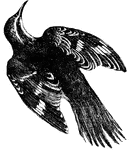
Creeper
The Creepers are small climbing birds which live and build their nests in the holes they bore in the…

Creeper
The Creepers are small climbing birds which live and build their nests in the holes they bore in the…

Creeper
The Creepers are small climbing birds which live and build their nests in the holes they bore in the…
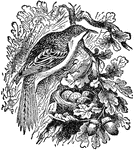
Brown Creeper
The Brown Creeper (Mohoua novaeseelandiae), also known by its Māori name, Pipipi, is a small…
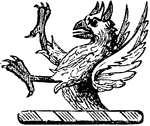
Demi-Griffin Crest
"Crest, a demi-griffin armed, gules. ARMED. This word is used to express the horns, hoofs, beak, or…

Crossbill
Known for their distinct crossed bill, these birds eat seed from mature conifer cones. Their unique…
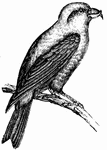
Crossbill
Known for their distinct crossed bill, these birds eat seed from mature conifer cones. Their unique…
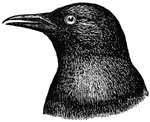
Crow
The true crows are large passerine birds that comprise the genus Corvus in the family Corvidae. Ranging…
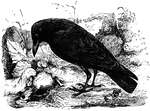
Carrion-Crow of Europe
The carrion-crow of Europe has been known to feed on decaying flesh, as well as young birds, shellfish,…
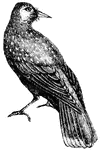
Nut-cracker Crow
The nutcracker has a straight bill for penetrating under the bark of trees in search of insects, (Figuier,…
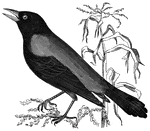
Rusty Crow-Blackbird
Resembling the crow-blackbird, the rusty crow-blackbird inhabits much the same region, but is less in…
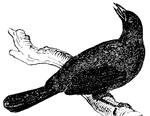
Cuckoo
The cuckoo is a member of the Cuculidae family. They have slender bodies, with long tails and downturned…

Black-billed cuckoo
Averaging about twelve and a half inches in length, the black-billed cuckoo resembles the yellow-billed…
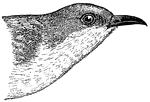
Black-billed Cuckoo
The Black-billed Cuckoo, Coccyzus erythropthalmus, is a cuckoo. Adults have a long brown tail and a…
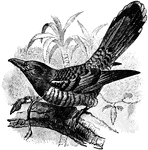
Channel-Billed Cuckoo
The Channel-Billed Cucko (Scythrops novaehollandiae) is the largest species of cuckoo and the largest…
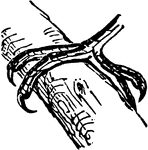
Foot of a Cuckoo
The foot of a Cuckoo, a bird belonging to the Scansores order. Scansores is an order of birds, popularly…
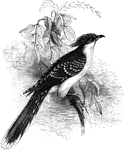
Great spotted cuckoo
The great spotted cuckoo divides its time between North Africa and Southern Europe, laying its eggs…
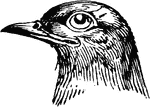
Head of Cuckoo
The head of a Cuckoo, a bird belonging to the Scansores order. Scansores is an order of birds, popularly…
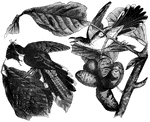
Yellow-billed cuckoo
Also known as the common American cuckoo, the yellow-billed cuckoo subsists on a diet of hairy caterpillars,…
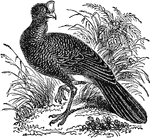
Curassow
Curassows are one of the three major groups of cracid birds. Three of the four genera are restricted…
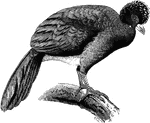
Crested Curassow
Crax alector, Crested Curassow, is black with a purplish gloss, the belly being white, the naked lores…
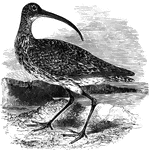
Curlew
Distinguished by a long, slender bill which curves downward, the curlew feeds mostly on worms, slugs,…

Curlew
Curlew is the common name for the bird genus Numenius, a group of eight wader species, characterised…

Black-Banded Dacelo
The black-banded dacelo, found around the Cape of Good Hope. They are known for feeding on earthworms,…
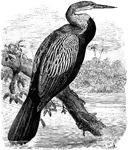
Indian Darter
"The Indian Darter (Plotus melangaster) or snake-bird of tropical and subtropical America, ranging northwards…
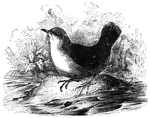
Black Dipper
The black dipper, also known as the European water-ousel, feeds on small shellfish and insects.
